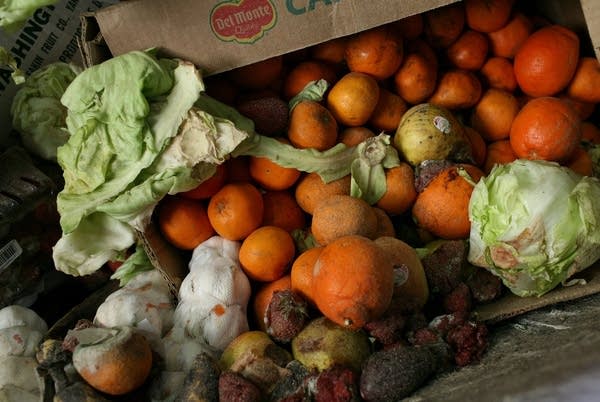8 tips to reduce food waste at home this holiday season

Go Deeper.
Create an account or log in to save stories.
Like this?
Thanks for liking this story! We have added it to a list of your favorite stories.
According to some estimates, roughly 40 percent of food produced in the United States goes uneaten.
Minnesotans alone threw out 517,000 tons of food waste in 2012, according to the Minnesota Pollution Control Agency. That doesn't count food left in the fields. It's what gets thrown away and ends up in landfills or waste energy facilities.
8 ways to reduce food waste
Turn Up Your Support
MPR News helps you turn down the noise and build shared understanding. Turn up your support for this public resource and keep trusted journalism accessible to all.
1. Make an "Eat me first" shelf in your fridge. Put fresh fruits and vegetables there along with other items that will spoil soon so you don't lose them in the back of the fridge. Make sure you store your food in the best way to make it last longer.
2. Create a meal plan and line it up with your schedule. Creating a meal plan before grocery shopping isn't always enough to prevent waste. It's also important to look at your weekly plans to determine who will be at home for meals and how much time you have to prepare food.
3. You don't have to throw away a meal you don't like. Consider researching ways to make it taste better, freeze it for another time when you're not sick of it or bring it to work.
4. Learn how to get the most out of your fridge:
5. Composting is good, but preventing waste is better for environment and your budget. An average household in St. Paul wastes $96 a month throwing out food.
6. Distribute your leftovers after a holiday party. You can prepare containers, such as mason jars, to send all guests home with extra food. Also consider bringing leftovers to work.
7. Monitor the cost of your food waste. Keep all your food receipts and mark items you throw away to calculate totals each month.
8. Don't throw away food just because of an expiration date. Sites like Still Tasty help consumers know when food is still safe to eat after an expiration date.


